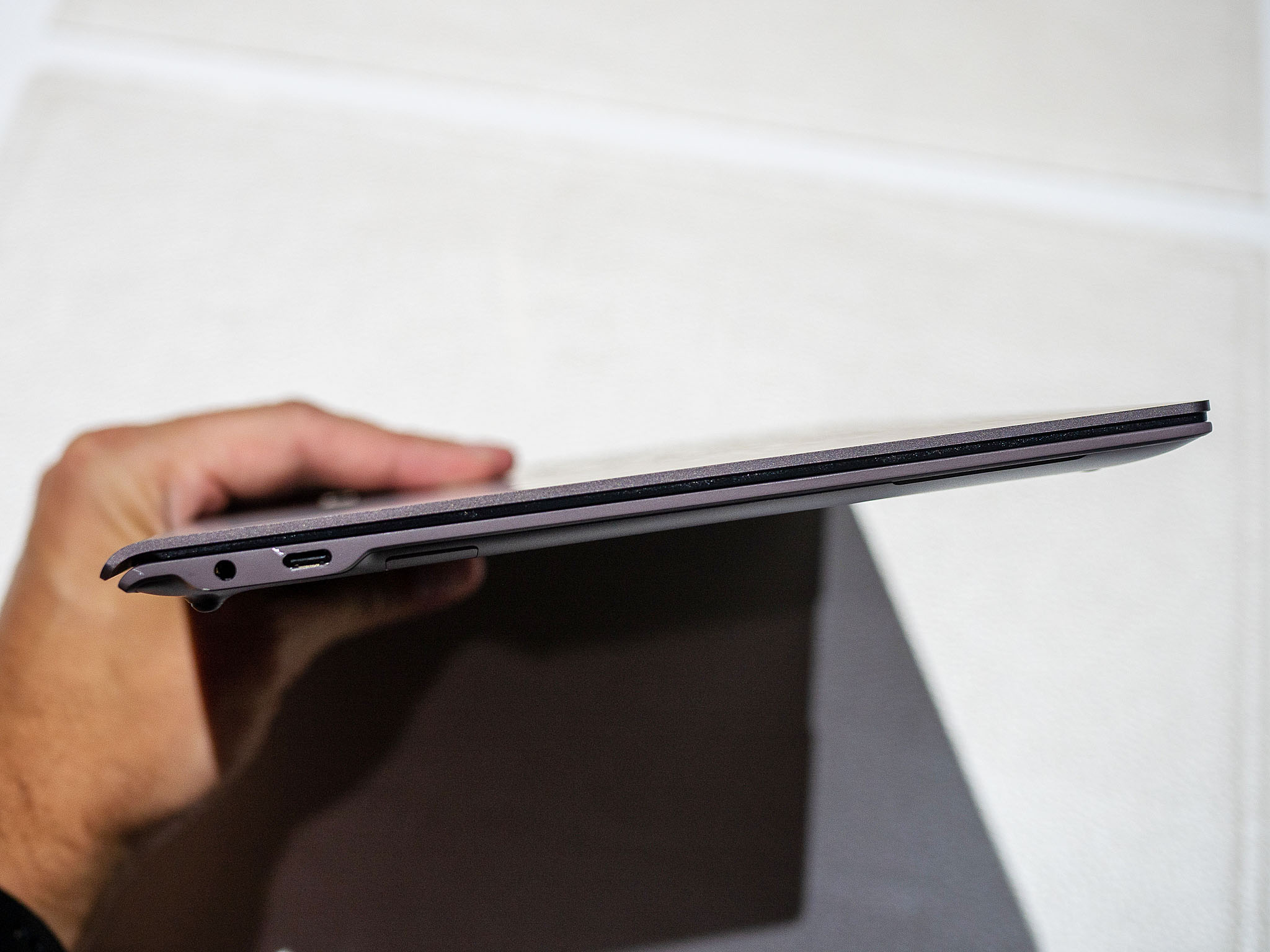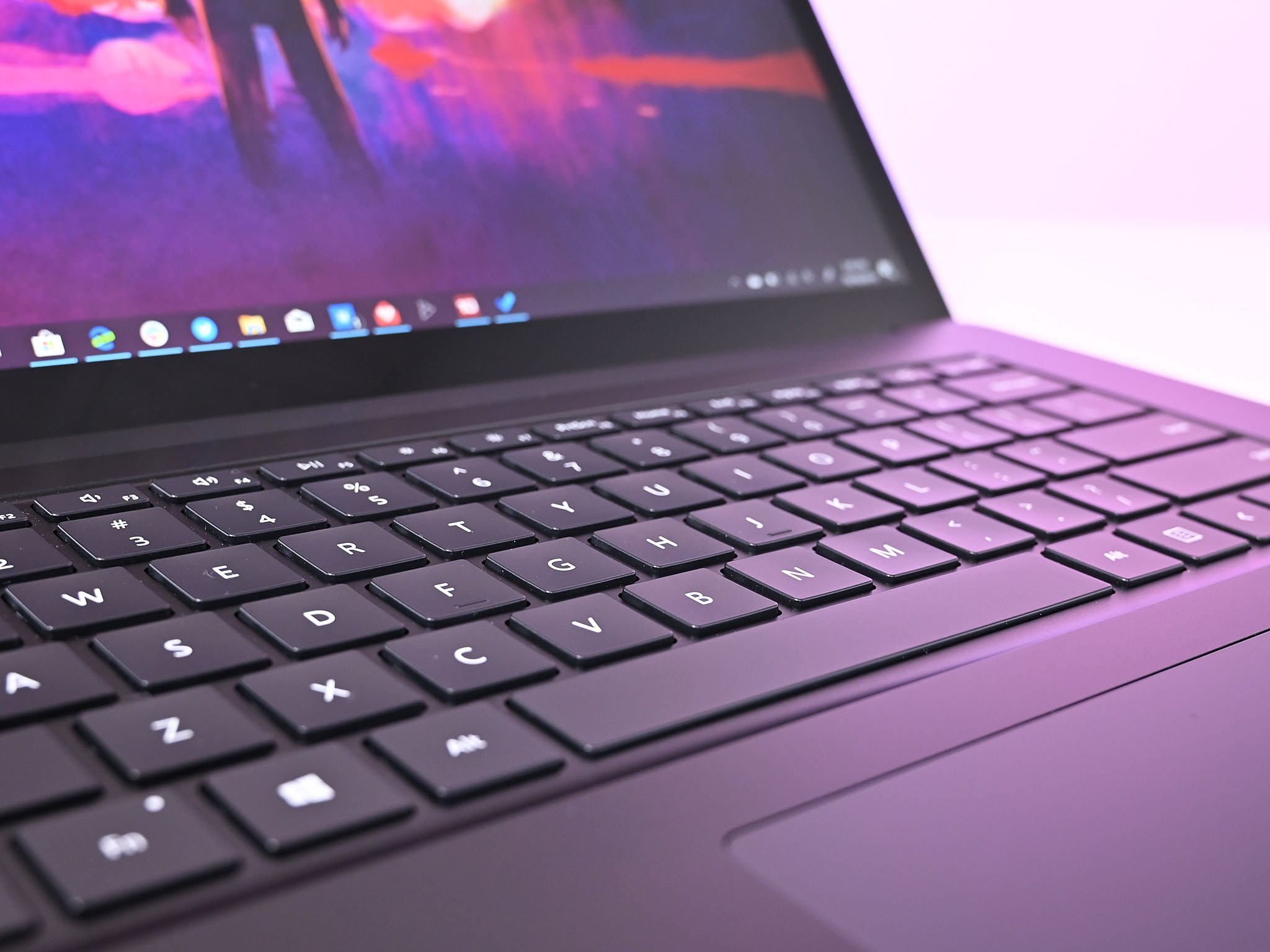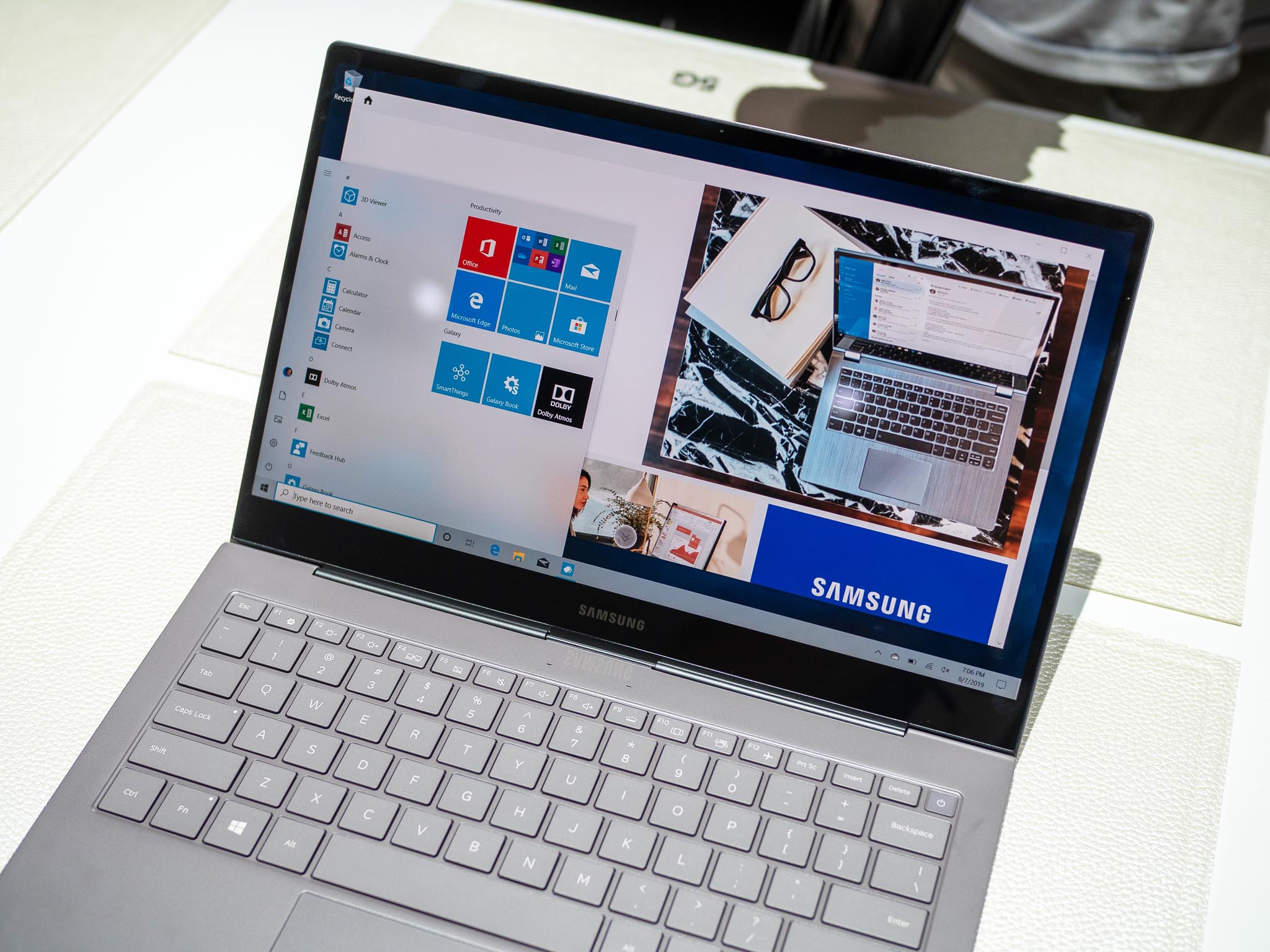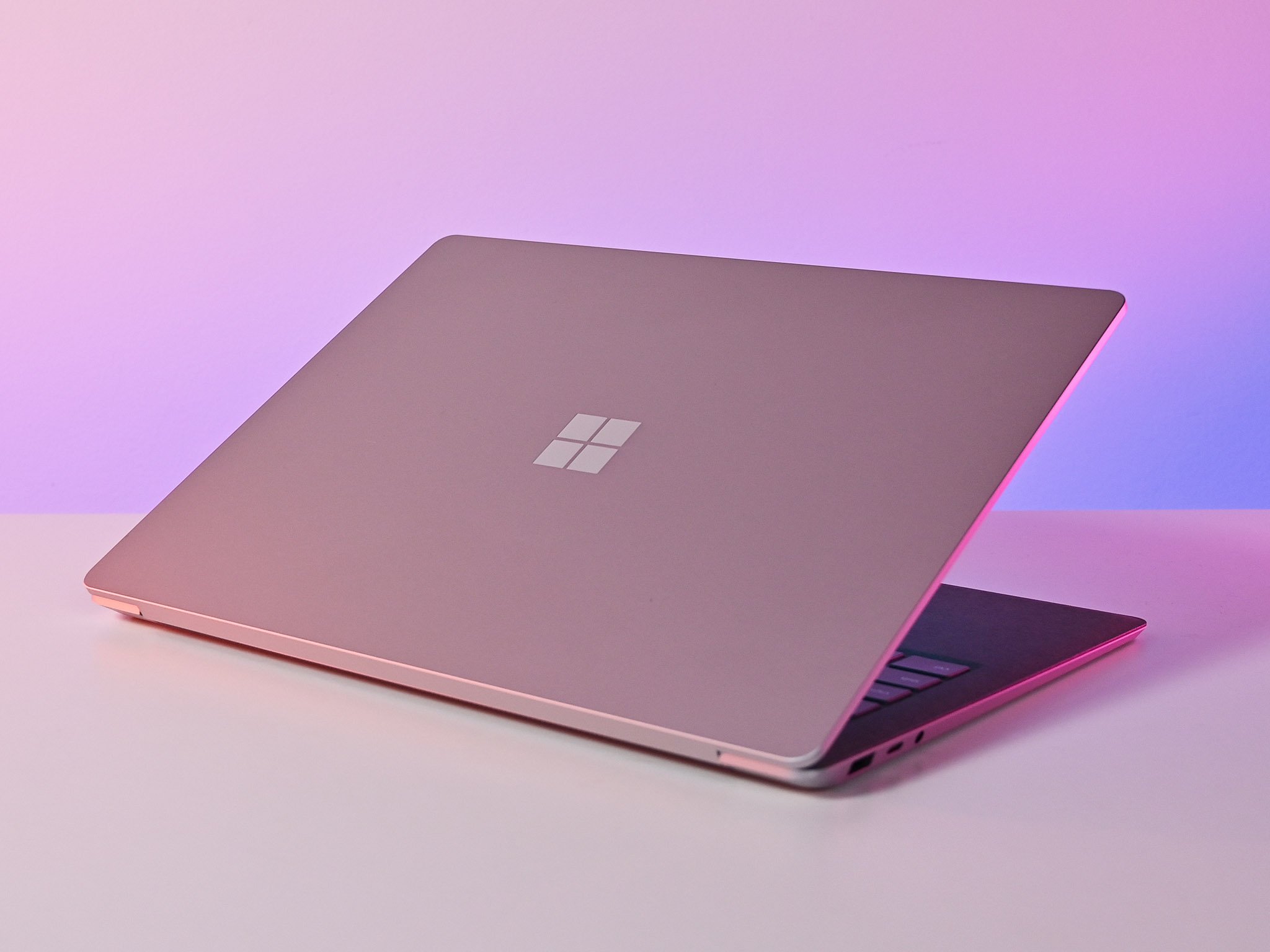
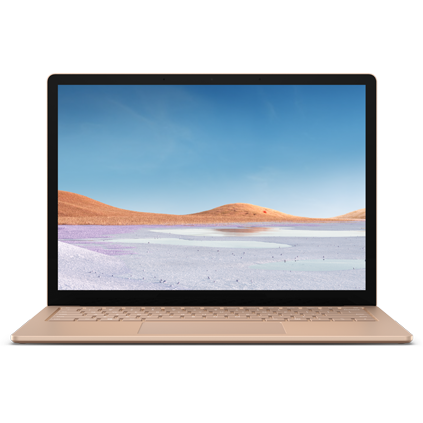
Two Sizes
The Surface Laptop 3, available in two sizes, is Microsoft's premium Ultrabook. Go with 10th Gen Intel hardware for outstanding performance, or choose AMD Ryzen chips in the larger model. You get a beautiful touch display with inking capabilities, solid battery life, and an excellent keyboard and Precision touchpad.
Pros
- 13.5- or 15-inch sizes to choose from
- Gorgeous touch display with inking
- Comfortable keyboard and touchpad
- Solid battery life
- Premium design and construction
Cons
- No microSD and one USB-C
- No LTE
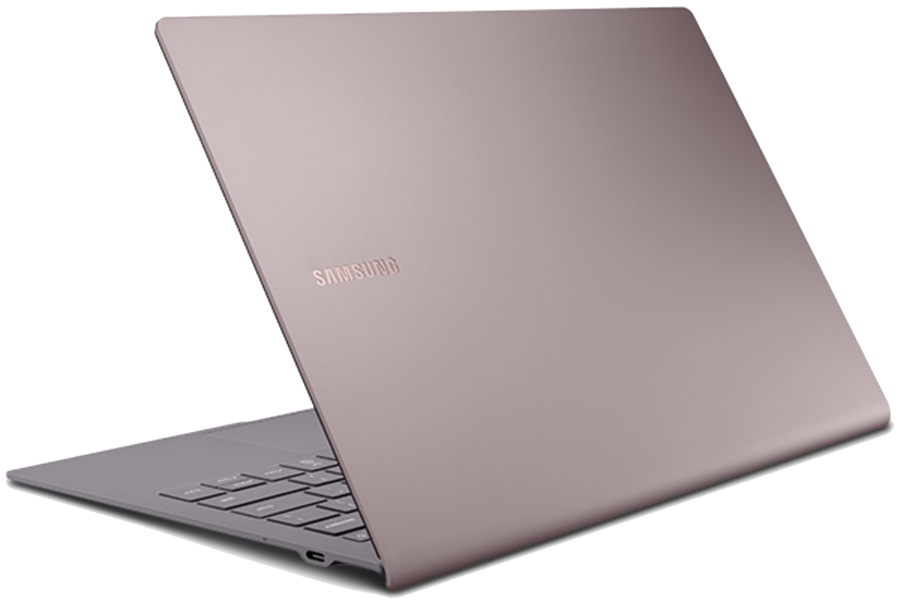
Ultraportable Notebook
The Galaxy Book S won't match up to the Surface Laptop 3 in terms of display or performance, but its 4G LTE capabilities and svelte chassis make it ideal for mobility. It's built well, it has more ports, and battery life will last you through the day. As long as you don't need the extra power or high-res screen with inking, it will fit in well as a travel partner.
Pros
- Incredibly thin and light
- 4G LTE connectivity
- Impressive battery life
- microSD card reader and two USB-C
Cons
- Higher starting price
- Lower-res 16:9 display
- Not as much performance
- ARM has some limitations
Surface Laptop 3 vs. Galaxy Book S tech specs
| Header Cell - Column 0 | Surface Laptop 3 (13.5) | Surface Laptop 3 (15) | Galaxy Book S |
|---|---|---|---|
| Processor | 10th Gen Intel Core i5-1035G7 Core i7-1065G7 | 10th Gen Intel Core i5-1035G7 Core i7-1065G7 AMD Ryzen 5 3580U AMD Ryzen 7 3780U | Qualcomm Snapdragon 8cx |
| RAM | 8GB, 16GB LPDDR4x | 8GB, 16GB, 32GB LPDDR4x | 8GB LPDDR4x |
| Storage | 128GB, 256GB, 512GB, 1TB SSD | 128GB, 256GB, 512GB, 1TB SSD | 256GB SSD |
| Display size | 13.5 inches Touch | 15 inches Touch | 13.3 inches Touch |
| Display resolution | 2256x1504 | 2496x1664 | 1920x1080 |
| Aspect ratio | 3:2 | 3:2 | 16:9 |
| Graphics | Intel Iris Plus | Intel Iris Plus AMD Radeon Vega 9 AMD Radeon RX Vega 11 | Adreno 680 |
| Ports | USB-C USB-A 3.5mm audio Surface Connect | USB-C USB-A 3.5mm audio Surface Connect | Two USB-C 3.5mm audio microSD card reader |
| Connectivity | Wi-Fi 6 Bluetooth 5.0 | Wi-Fi 5 Wi-Fi 6 Bluetooth 5.0 | Wi-Fi 5 4G LTE Bluetooth 5.0 |
| Camera | Front-facing 720p | Front-facing 720p | Front-facing 720p |
| Biometrics | IR camera | IR camera | Fingerprint reader |
| Battery | 45.8Wh | 45.8Wh | 42Wh |
| Dimensions | 12.1 x 8.8 x 0.57 inches (308mm x 223mm x 14.5mm) | 13.4 x 9.6 x 0.57 inches (339.5mm x 244mm x 14.69mm) | 12 x 8 x 0.24-0.46 inches (305.2mm x 203.2mm x 6.2-11.8mm) |
| Weight | From 2.79 pounds (1.27kg) | 3.40 pounds (1.54kg) | 2.12 pounds (0.96kg) |
Features and design
Microsoft's Surface Laptop 3 is available in both 13.5- and 15-inch sizes. Despite the size difference, most features remain the same between the two. The 13.5-inch model weighs in at about 2.79 pounds (1.27kg), while the 15-inch model weighs about 3.40 pounds (1.54kg). Both laptops have the same 0.57-inch (14.5mm) thin chassis. These are certainly sleek aluminum laptops with a high build quality, and you shouldn't have any issues using it in a cafe or a boardroom.
The Galaxy Book S is much thinner and lighter than both Laptop 3 models, weighing in at 2.12 pounds (0.96kg) and measuring just 0.24 inches (6.2mm) at its thinnest point. If you want the most portable option, this is it, especially when you factor in 4G LTE connectivity that will keep you connected to the internet even when out of Wi-Fi range. The Surface Laptop 3 does not have optional LTE, but it does offer Wi-Fi 6 connectivity for blazing wireless speeds. The Galaxy Book S is stuck with Wi-Fi 5.
Ports are somewhat limited on these laptops compared to other Ultrabooks. The Galaxy Book S includes two USB-C, a microSD card reader, and 3.5mm audio. Note that it uses one of the USB-C ports to charge, so you will be reduced to just one when the battery is depleted. Both sizes of the Laptop 3 include one USB-C, USB-A, 3.5mm audio, and Surface Connect, which can be used to connect something like the Surface Dock. The Laptop 3 uses Surface Connect to charge, so you won't lose the USB-C port when your battery is low.
The Laptop 3 and Galaxy Book S use a front-facing 720p webcam for video conferencing and stills, and it's located above the display for a proper capture angle. For some extra security, the Laptop 3 models include an IR camera for Windows Hello. While the Galaxy Book S has no IR, its power button doubles as a fingerprint reader for Windows Hello. You get that extra layer of security, no matter which device you choose.
In terms of keyboard, the thin design of the Galaxy Book S doesn't allow for a lot of key travel. This will no doubt irk those who type all day. In contrast, both Laptop 3 models have outstanding keyboards with plenty of travel and a smooth click. You should always try to test a keyboard before making a final decision, but for most people who write all day, the Laptop 3 will be preferable. In terms of pointing, all devices have a sizeable Precision touchpad that allows for all Windows 10 gestures.
Bottom line? You're going to get a well-built, premium laptop no matter which you ultimately choose. The Laptop 3 models are going to be a bit bulkier, but performance hardware and display take up space. The Galaxy Book S is the right choice for anyone who wants to remain mobile, but performance won't match up, and the display isn't nearly as impressive.
Display
Surface devices always wow us when it comes to display. The 13.5-inch Laptop 3 has a 2256x1504 resolution to go along with the boxy 3:2 aspect ratio that offers more screen real estate. The 15-inch Laptop 3 sits at 2496x1664, a higher resolution due to the larger size. These are touch displays with full inking capabilities when you add a Surface Pen into the mix. Color and contrast are outstanding, and you shouldn't mind looking at these displays daily.
All the latest news, reviews, and guides for Windows and Xbox diehards.
On the other hand, Samsung isn't a slouch when it comes to display technology. The Galaxy Book S screen looks excellent with precise color and contrast, but it's set at a lower 1920x1080 resolution with a 16:9 aspect ratio. It is touch-enabled, but Samsung claims that an active pen will not work with the display.
Performance and price
The Galaxy Book S is meant to be a portable productivity machine, and the ARM-based performance is set to match. It is powered by a Qualcomm Snapdragon 8cx processor (CPU); compared to Intel and AMD CPUs, there are some limitations. Running x86 32-bit apps requires some emulation, which causes a slight hit to performance compared to running native ARM64 apps. There's enough power to handle everyday productivity work like web browsing, word processing, and video streaming, but it's not going to match up to a 10th Gen Intel Core i5 or Core i7.
The 13.5-inch Surface Laptop 3 is only available with 10th Gen Intel Core i5 or i7 CPUs, whereas the 15-inch model is available with Intel or AMD Ryzen hardware. You'll get the best performance from Intel chips and their Iris Plus Graphics; if you want the most power, this should be your first choice. The Galaxy Book S and the Intel versions of the Laptop 3 wake almost instantly from sleep, a premium feature that's not available in AMD versions of the Laptop 3.
Intel Core i7 13.5-inch Surface Laptop 3 models get about eight hours of battery life from a charge depending on usage, while the 15-inch AMD Ryzen 5 model managed closer to 10 hours from a charge. We haven't yet been able to test battery life in the Galaxy Book S, but Samsung is claiming about 25 hours of video playback time. Real numbers will no doubt vary significantly, especially when real productivity work (and any app-emulation) are taken into account. Either way, these laptops should have enough battery life to make it through most of a workday, and they all charge quickly.
There's currently only one Galaxy Book S configuration available, priced at about $1,000. Alongside the Snapdragon 8cx CPU, it has 8GB of RAM and a 256GB SSD. The Laptop 3 makes it far easier to get exactly what you need. AMD Ryzen hardware is available in the 15-inch model, while Intel hardware is available in both 13.5- and 15-inch (Business) versions. Up to 32GB of RAM can be included in the larger Laptop 3, and up to a 1TB SSD is available for plenty of storage.
Baseline 13.5-inch models with Intel Core i5 CPU, 8GB of RAM, and 128GB SSD start at about $800, while the same model with 256GB SSD costs about $1,000. Prices do climb relatively quickly once you get into the 15-inch models. An AMD Ryzen 5 CPU, 8GB of RAM, and 256GB SSD costs about $1,397, while a higher-end Ryzen 7 model with 16GB of RAM and 512GB SSD costs about $1,797.
The Surface Laptop 3 is better for most people
Thanks to plenty of configuration options, your choice of Intel or AMD hardware, and a gorgeous touch display with high resolution and inking capabilities, the Surface Laptop 3 should appeal to more people. It's going to deliver better performance, solid battery life, and a far more comfortable keyboard. As long as you don't want a laptop as thin and light as possible with LTE capabilities, the Surface Laptop 3 should be your first choice.
Samsung's Galaxy Book S offers the most mobility
Its display isn't as impressive, and performance won't compare to the Surface Laptop 3, but the Galaxy Book S delivers a lightweight, slim chassis, excellent battery life, and 4G LTE connectivity. If you find you're often out of the office and always need to stay connected, the Galaxy Book S will make an excellent machine for general productivity use.

Cale Hunt brings to Windows Central more than nine years of experience writing about laptops, PCs, accessories, games, and beyond. If it runs Windows or in some way complements the hardware, there’s a good chance he knows about it, has written about it, or is already busy testing it.

